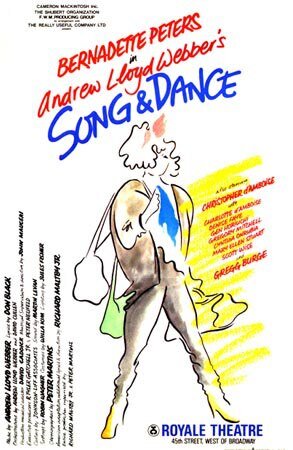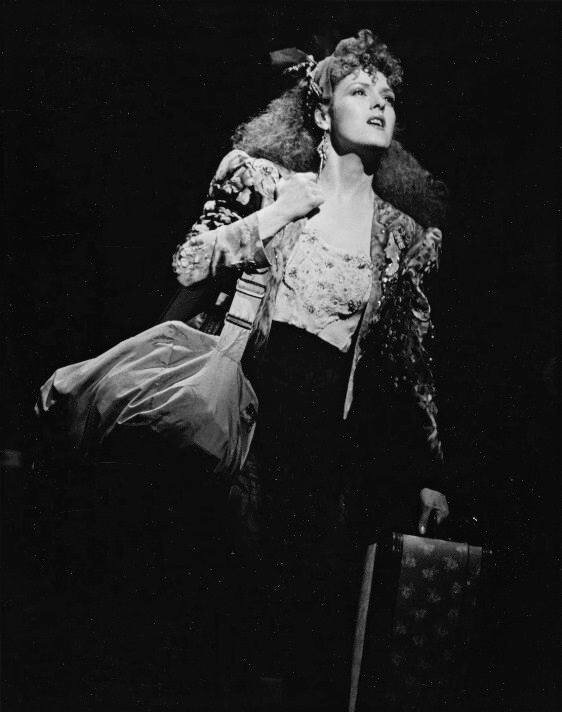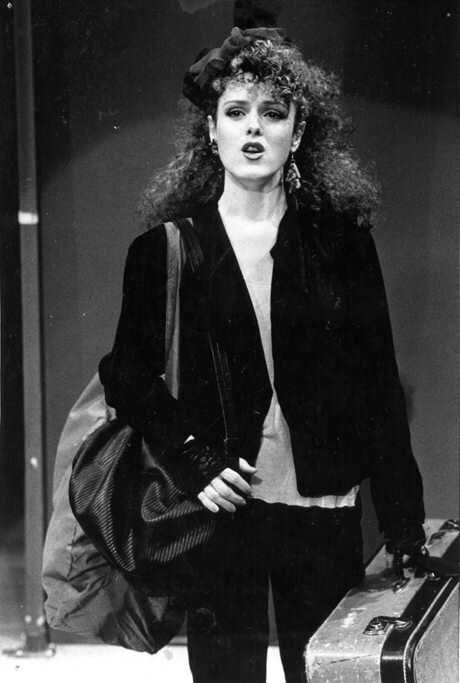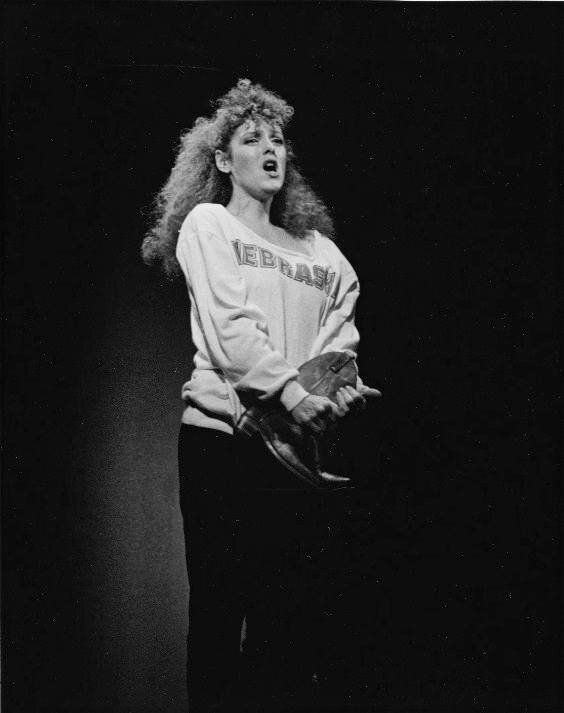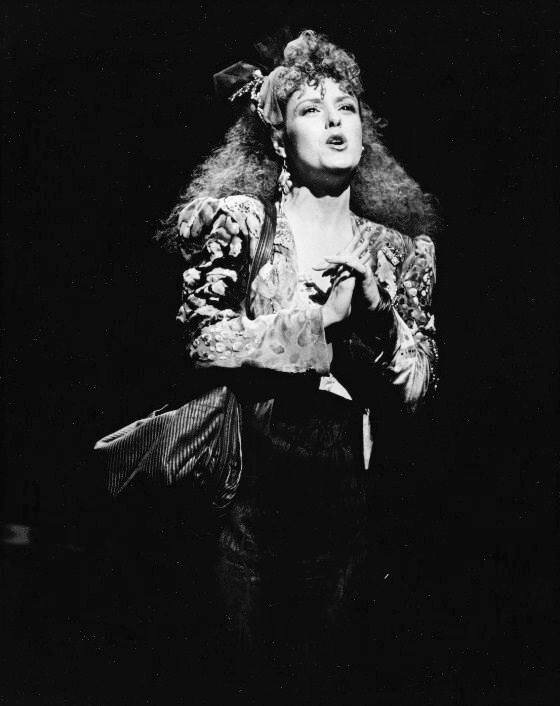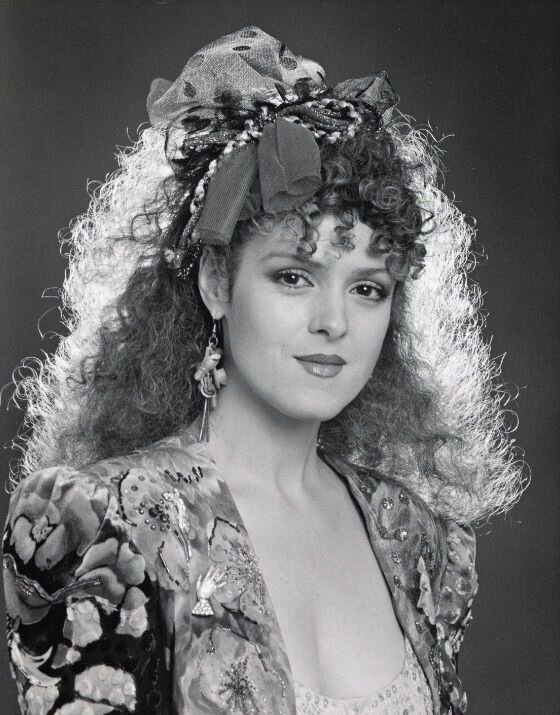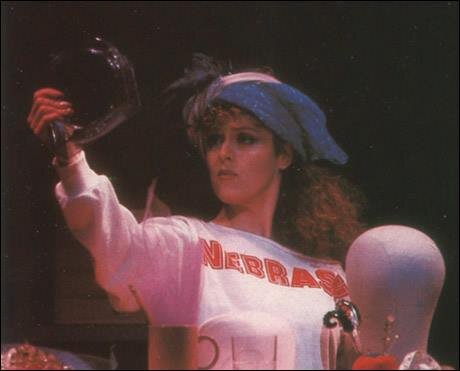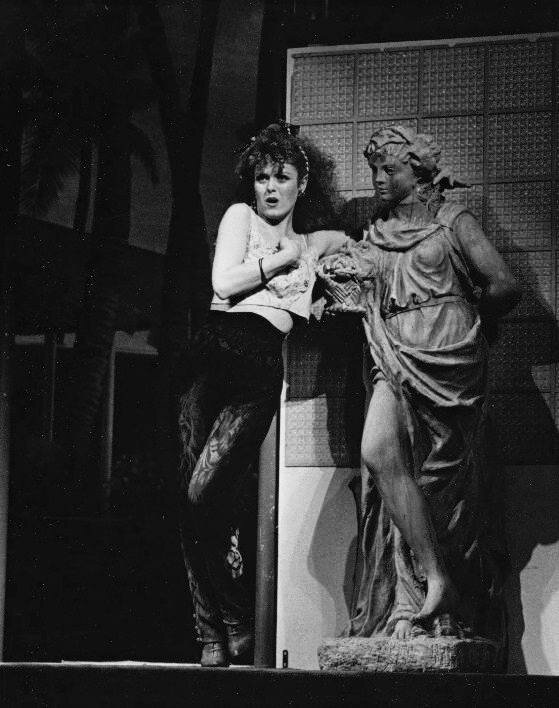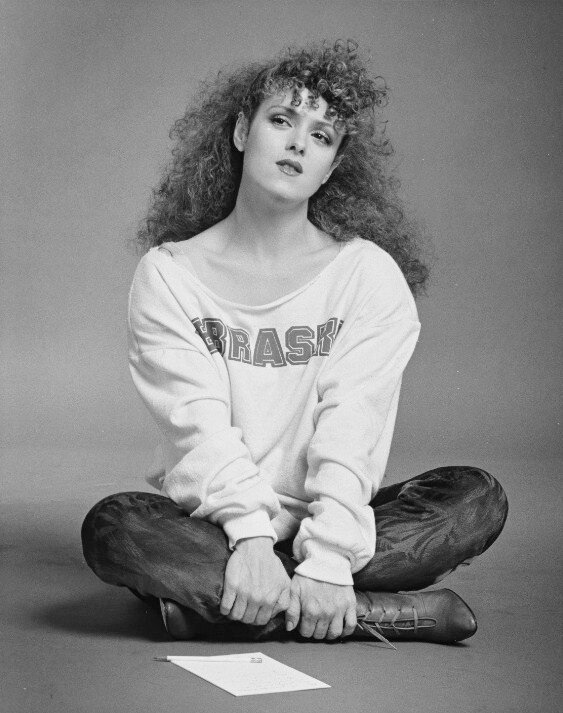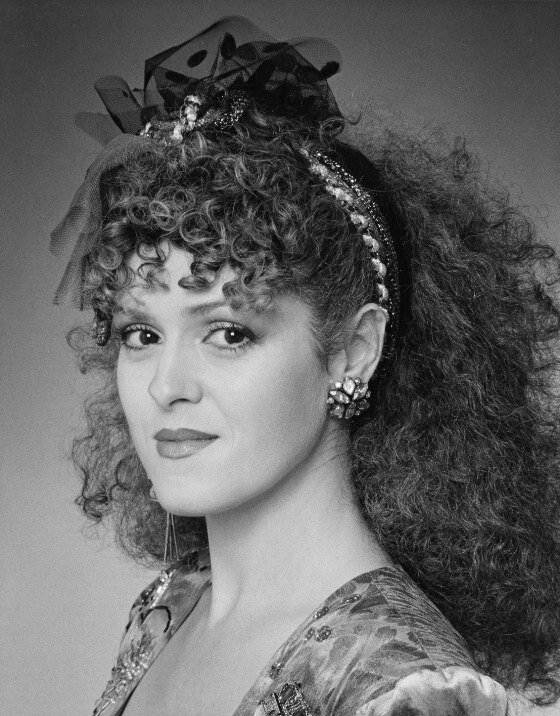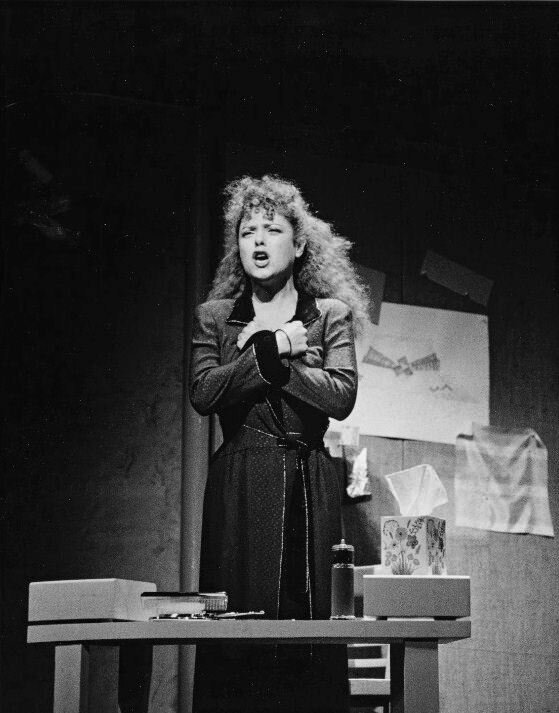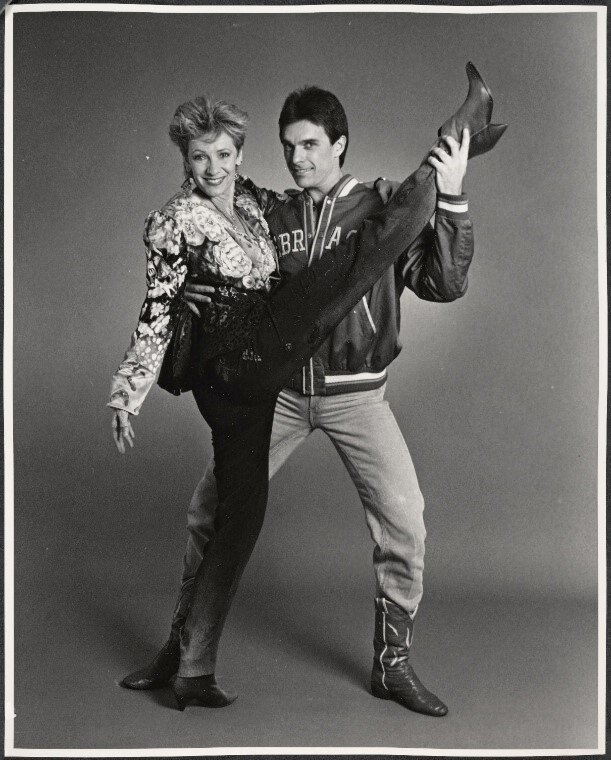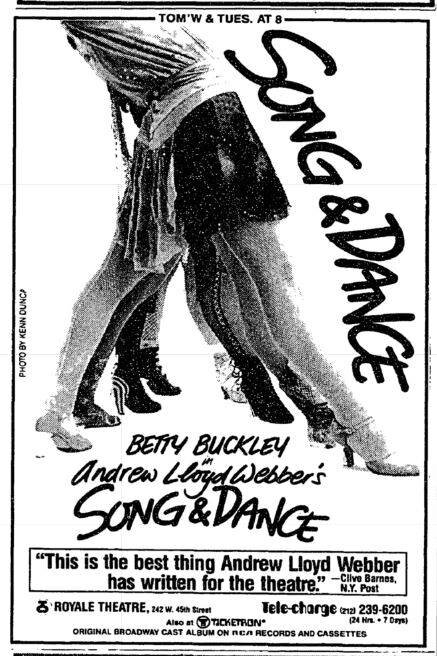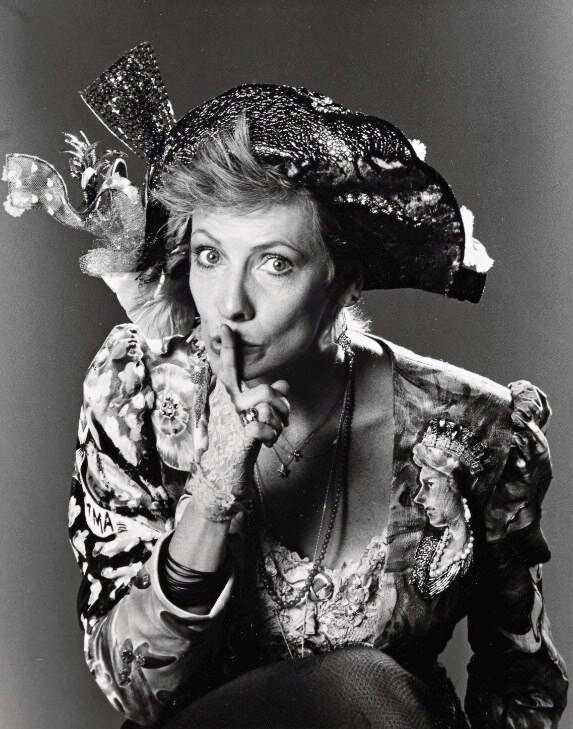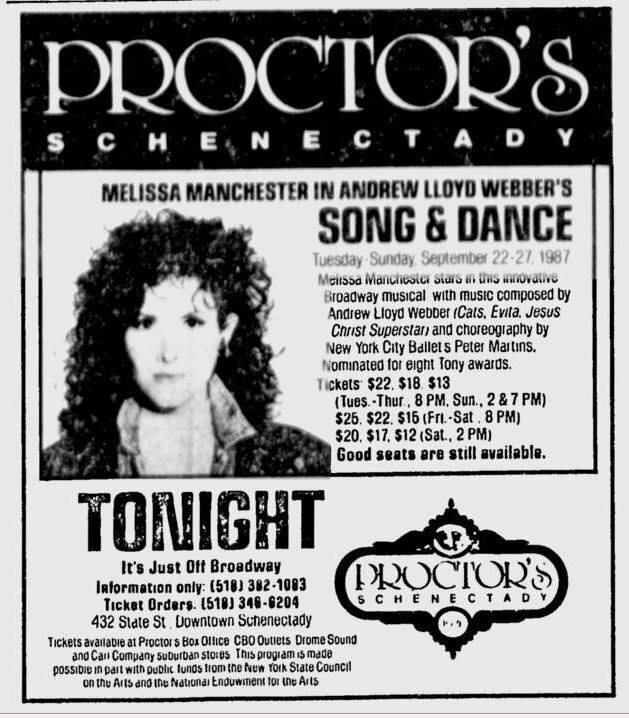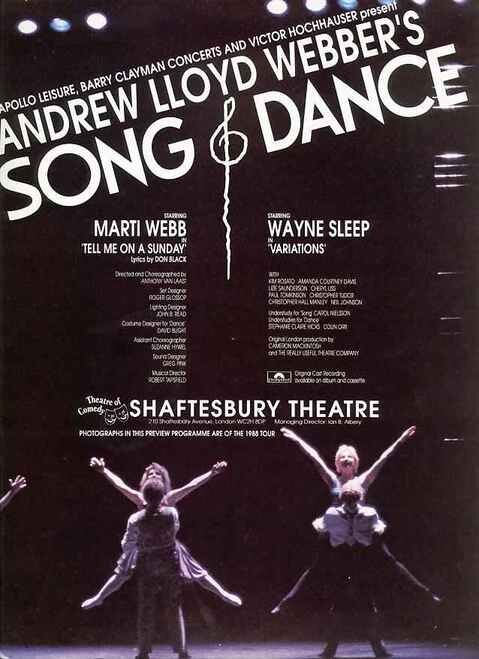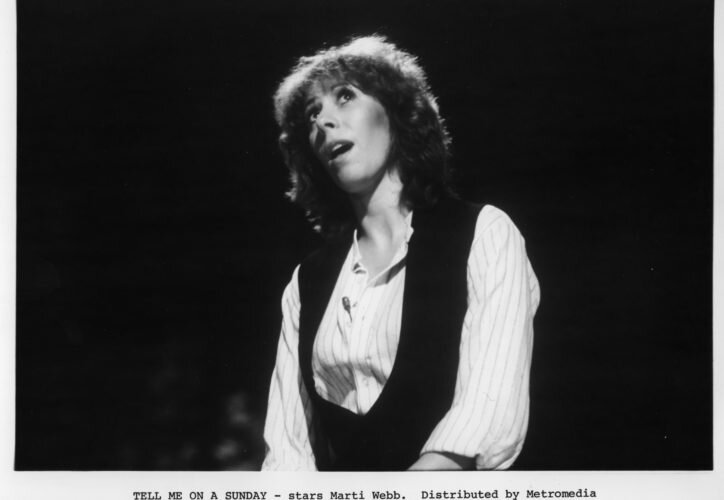Remembering Song & Dance
Andrew Lloyd Webber and Don Black created a heartfelt, funny, touching and palpably heartbreaking musical when they wrote Tell Me On A Sunday. Written as a one-woman show for British actress-singer Marti Webb, Tell Me On A Sunday was presented at the Sydmonton Festival in 1979. Telling the story of an English woman who has just moved to the United States, the musical follows her as she navigates her new home (first NYC, then Los Angeles) and explores the possibilities of love and career, writing letters to her mother back in England detailing her experiences. This is the basic premise for the first act of a musical that would come to London’s West End in 1982 under the title Song & Dance.
With the “song” portion of Song & Dance explained, the other half of the musical is best explained as a “dance” recital, taking a different point of view of the woman’s story, following instead a younger man that she had a relationship with in the “song” portion. The entire sequence is dancing, a story told through movement about this young man’s dalliance with the woman. This ballet sequence was created in 1978 and the music titled “Variations” composed by Webber for his brother Julian, a concert cellist. The composition is inspired by Pagnani’s “A Minor Caprice No. 24.”
The ”Song” and the “Dance” portions were brought together under the suggestion of producer Cameron Mackintosh. Song & Dance premiered at London’s Palace Theatre on March 26, 1982 under the direction of Tom Gutteridge. Marti Webb reprised her role from the Sydmonton outing, Don Black wrote some new lyrics for the piece, and Webber crafted a handful of new songs. The West End production ran for 781 performances.
When Song & Dance ultimately crossed the pond to take residence at Broadway’s Royale Theatre in 1985, it would find Bernadette Peters in the lead as “Emma” (now given a name), winning her first Tony Award for her efforts. Opening September 18, 1985, the New York production was directed by Richard Maltby, Jr., who made some modifications to the script to make it more accessible to American audiences. Joining Peters was ballet dancer extraordinaire Christopher d’Amboise who received a Tony nomination for his majestic performance in the “dance” portion of the show. Peter Martins choreographed.
Song & Dance is best remembered for its score, a series of personal and introspective reflections including the heartbreaking “Tell Me On a Sunday,” the biting “Take That Look Off Your Face,” the cynical (but funny) “Capped Teeth and Caesar Salad” (a deliciously droll mockery of the superficial worlds of Hollywood and Beverly Hills) and the euphoric “Unexpected Song.”
Betty Buckley followed Peters in the role of Emma, and Gregg Burge took over the d’Amboise role. The musical was not a runaway hit, shuttering after 474 performances, but it was never meant to be an enormous spectacle. It, perhaps, looked small next to the season’s big hit, the innovative and cleverly constructed The Mystery of Edwin Drood, to which it lost the Tony for Best Musical.
Mark Robinson is the author of the two-volume encyclopedia The World of Musicals, The Disney Song Encyclopedia, and The Encyclopedia of Television Theme Songs. His forthcoming book, Sitcommentary: The Television Comedies That Changed America,will hit the shelves in October, 2019. Hemaintains a theater and entertainment blog at markrobinsonwrites.com.

